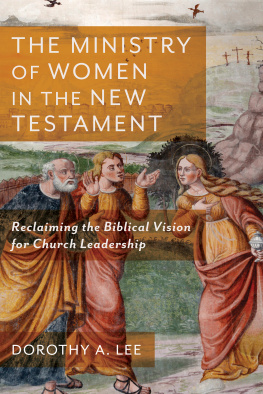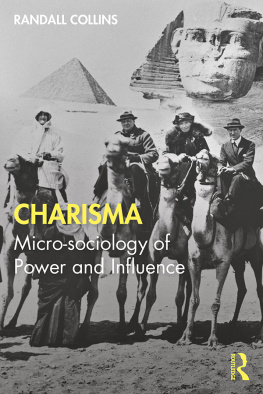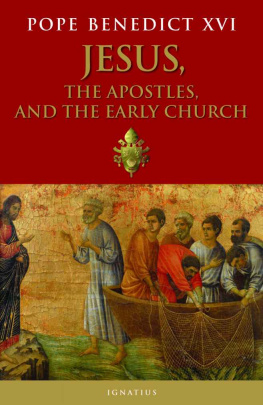Raymond F. Collins study of the practice of celibacy in Latin Catholicism is a calm and critical assessment of the data that has generated this tradition. Collins skills as a New Testament scholar are well known; his skills as an interpreter of the patristic and early canonical tradition of the Latin Church become evident as this study opens and then unfolds. This clearly written and well-documented study deserves to become an essential point of reference for all future discussions of this question.
Francis J. Moloney, SDB, AM, FAHA
Accompanied by a Believing Wife is the definitive work on celibacy and the New Testament, with important implications for the church of our own day. Raymond F. Collins brings decades of experience and learning as a New Testament scholar to this project, and it is evident on every page. His conclusions are often bold and challenging but always supported by careful investigation. With a reputation for exemplary clarity, his writing is highly accessible to scholar, student, clergy, and layperson. Essential reading for all.
Margaret Y. MacDonald
St. Francis Xavier University
Accompanied by a Believing Wife
Ministry and Celibacy in the Earliest Christian Communities
Raymond F. Collins

LITURGICAL PRESS
Collegeville, Minnesota
www.litpress.org
A Michael Glazier Book published by Liturgical Press
Cover design by Jodi Hendrickson. Cover photo: Thinkstock.
Unless cited within patristic and canonical writings, all Scripture texts in this work are taken from the New Revised Standard Version Bible: Catholic Edition 1989, 1993, Division of Christian Education of the National Council of the Churches of Christ in the United States of America. Used by permission. All rights reserved.
2013 by Order of Saint Benedict, Collegeville, Minnesota. All rights reserved. No part of this book may be reproduced in any form, by print, microfilm, microfiche, mechanical recording, photocopying, translation, or by any other means, known or yet unknown, for any purpose except brief quotations in reviews, without the previous written permission of Liturgical Press, Saint Johns Abbey, PO Box 7500, Collegeville, Minnesota 563217500. Printed in the United States of America.
The Library of Congress has cataloged the printed edition as follows:
Library of Congress Cataloging-in-Publication Data
Collins, Raymond F., 1935
Accompanied by a believing wife : ministry and celibacy in the earliest Christian communities / Raymond F. Collins.
pages cm
A Michael Glazier book.
Includes bibliographical references.
ISBN 978-0-8146-8213-5 ISBN 978-0-8146-8238-8 (e-book)
1. CelibacyHistory of doctrinesEarly church, ca. 30600. 2. CelibacyCatholic ChurchHistory. I. Title.
BV4390.C64 2013
253.2509015dc23
2013024504
For those who Search

For those who Sacrifice

For those who Strive

For those who Struggle

For those who Stumble

For those who Suffer
Preface
E ach of the books that I have written during the past three decades has its own history and its own story. In many ways the story of this book began more than a half century ago when I was ordained a subdeacon in the Roman Catholic Church for the service of the diocese of Providence, Rhode Island. I made the requisite promisesnamely, that I pray the daily office and commit myself to a life of celibacy. At the time I did not anticipate writing this book or any other book. I envisioned that I would be ordained to the priesthood the following year and then serve as a parish priest in my native diocese. Little did I know that in the mysterious ways of Divine Providence, the obedience I had promised to my bishop would lead to a life of teaching and writing about the New Testament, mixed with no small measure of academic and ecclesiastical administration.
In 1993 life as scholar and administrator brought me to The Catholic University of America in Washington, DC, where I was to become dean of the universitys School of Religious Studies. My predecessor as dean was Professor William Cenkner, OP, whose academic interests focused on the religions of the East, particularly Hinduism. As dean, he formulated a three-year, three-faith conference on marriage and the family. The three faiths were Roman Catholicism, Judaism, and Islam.
The first year of the conference was devoted to the horizontal axis of the family, the relationship between husband and wife. The second year was devoted to the vertical dimension of the family, the relationships between parents and children, children and parents. The third year was devoted to the entire gestalt , the family circle. Each year included nine presentations, three each by scholars from the respective faith traditions. One presentation focused on the topic from the vantage point of the traditions scriptures. Another presentation considered the topic from the standpoint of law and morality. The third presentation studied the topic from the point of view of its history and sociology.
Thus it was that when I came to Washington to discuss with Dean Cenkner some of the specifics of the position that I was about to assume, he asked me if I would be willing to speak on marriage in the New Testament during the conference that was to convene just three months into my deanship. I willingly consented, thus setting the stage for this book. In addition to the nine presentations, the conference had an open, public session. During this session, an Iranian imam pointedly asked me how I could claim to be a man of God when I so publicly flaunted Gods law.
The question nonplussed me. I was startled. To this day I wish that I could remember my answer but I cannot. Many times I had been asked about priestly celibacy. Many times have I discussed the topic, particularly when I was a seminary rector in the 1970s. Never before had I been personally confronted with the idea that priestly celibacy was a violation of Gods law. The imams question led me to begin thinking about celibacy in a new way.
The imams question obviously arose from his understanding of the Qurans vision of creation. And among his Signs is this, says Surah 30:21, that He created for you mates from among yourselves, that you may dwell in tranquility with them, and He has put love and mercy between your hearts. Verily, in that are the Signs for those who reflect. Similarly, in a staccato-like series of reflections on creation, Surah 78:8 says, And [have we not] created you in pairs? No wonder then that Surah 24:32 commands, Marry those among you who are single.
The Qurans vision of the creation of human beings with the consequent obligation that believers be married is most likely influenced by the idea of creation found in the first pages of Genesis. In any case, the visions are remarkably similar. The older narrative of creation, the Yahwists tale, tells the imaginatively beautiful story of the creation of woman (Gen 2:1824) because, in Gods judgment, It is not good that the man [ hadam ] should be alone (Gen 2:18). In a parallel, and probably later account of creation, the Priestly narrative says, In the image of God he created them; male and female he created them. God blessed them, and God said to them, Be fruitful and multiply (Gen 1:27b-28a). With a divine mandate, humans are to be Gods representatives and agents within the world of creation.














